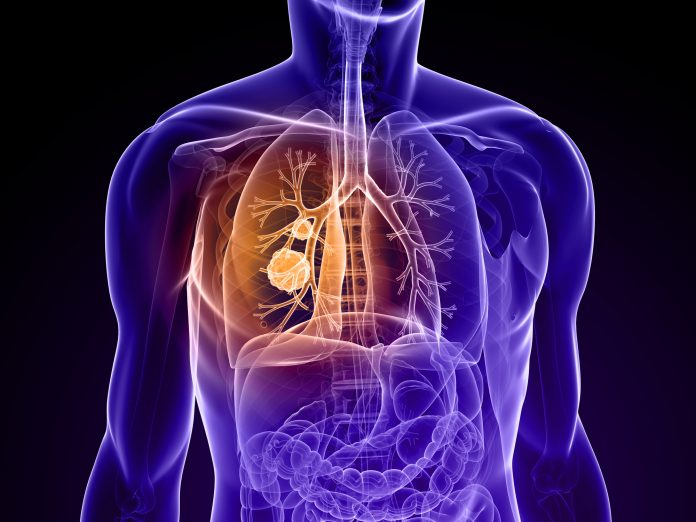
Moffitt Cancer Center researchers have created a predictive model to identify non-small cell lung cancer (NSCLC) patients not likely to respond to immunotherapy. The model uses information calculated from computed tomography images. Their results are published in a new article featured in JNCI Cancer Spectrum.
The Moffitt research team assessed the potential of characteristics from pre-treatment CT scans combined with clinical data to identify markers associated with outcomes to immunotherapy. Among 16 clinical features considered, the levels of serum albumin and the number of metastatic sites a patient had were significantly associated with overall survival. Among 213 radiomic features, gray level cooccurrence matrix (GLCM) inverse difference was associated with overall survival.
“Quantitative image-based features, or radiomics, reflect the underlying pathophysiology and tumor heterogeneity and have advantages over tissue-based biomarkers as they can be rapidly extracted using standard-of-care medical images and capture data from the entire tumor rather than a small portion of the tumor that is biopsied and assayed,” said Matthew Schabath, Ph.D., associate member of Department of Cancer Epidemiology at Moffitt.
NSCLC accounts for more than 80% of cases of lung cancer, a disease which affects about 235,000 people in the US alone per year. Lung cancer is the leading cause of cancer death for both men and women in America. The world market for drugs to treat NSCLC is currently estimated at more than $15 billion.
Immunotherapy agents that inhibit PD1, PD-L1 or CTLA-4 have become widely used in clinical practice to treat NSCLC. Approximately 20% to 50% of advanced NSCLC patients have strong responses to immunotherapy and show prolonged survival, but the remaining patients often have poor responses. There is an urgent need to identify biomarkers that can predict which patients will not respond to therapy to avoid unnecessary treatment and administer potential beneficial drugs instead.
PD-L1 expression measured in a patient’s tumor is a common biomarker that is often used to determine patients who should be treated with anti-PD1/PD-L1 therapy. However, several studies have shown that patients may be responsive to these agents even with low expression of PD-L1. Other similar tissue-based biomarkers may be cost-prohibitive or require an adequate quality and quantity of tissue that may be limited in supply.
The researchers analyzed clinical characteristics and radiomics features of 180 NSCLC patients treated with anti-PD1/PD-L1 with or without anti-CTLA-4 therapy. “Our goal was to create a parsimonious model, known as a simple model with the fewest variables and the greatest predictive power possible,” said Bob Gillies, PhD, senior member and chair of the Department of Cancer Physiology.
After identifying the key clinical features, which as noted, included serum albumin, number of metastatic sites, and GLCM, they created the model. It comprised four groups divided according to risk of death following immunotherapy: low risk, moderate risk, high risk and very high risk.
The researchers then validated their model in two additional patient populations and confirmed that the very high-risk group had an extremely poor overall survival after immunotherapy, with a three-year overall survival of 0%, while the low-risk group had a three-year overall survival of approximately 40%.
They also discovered that the radiomic feature GLCM inverse difference was associated with expression of the gene CAIX that is involved in tumor hypoxia and regulates tumor growth and metastasis, which provides biological support for GLCM inverse difference as a potential biomarker. Considering hypoxia, or low oxygen in your tissues, has important implications for all types of cancer development, these results suggest that GLCM inverse difference may be a possible predictor for patient responses to other anti-cancer drugs.
“These results suggest very high-risk patients should either avoid immunotherapy altogether or utilize upfront combination treatments that may yield an improved response,” said Schabath. “We hope with further study this model can be used to change clinical practice and allow patients to avoid drugs they may not have a response to.”













